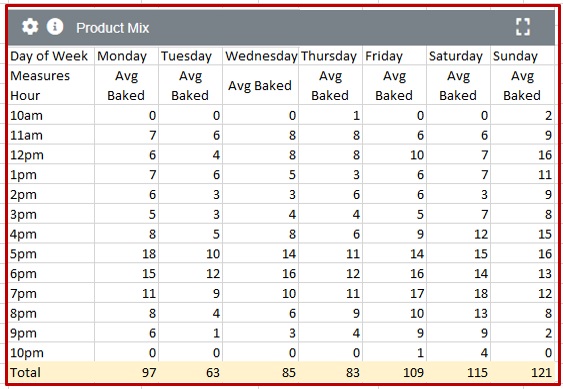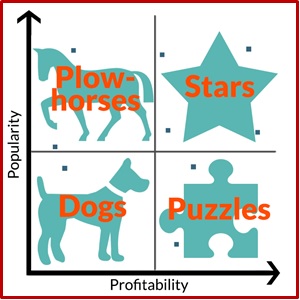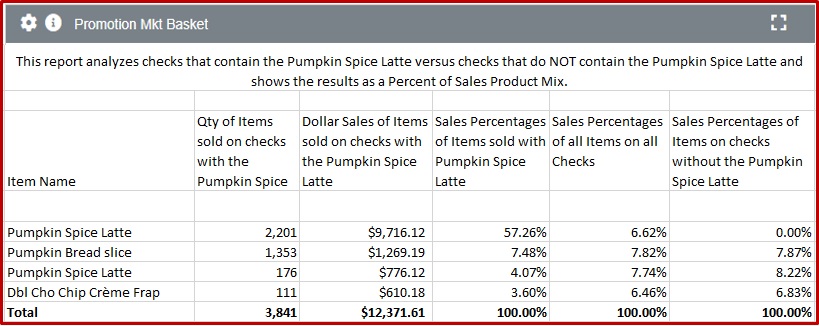
In a prior blog post, How to use PMIX Analysis, I wrote about Restaurant Product Mix in various stages of reporting complexity from Basic to Advanced Reporting and how each view can provide different insights. Today’s blog is going to capitalize on that prior issue but also take a different view in an effort to expand on the uses for PMIX.
What is a PMIX Report
As you may know, a Product Mix or PMIX report in its simplest form can tell you how many of what was sold by day, week, month, etc. It’s here that I want to focus on the uses of PMIX as a tool to help streamline food prep, waste, cost, and labor while maximizing guest satisfaction – what, PMIX for improving my customer satisfaction and labor? No way!
Daily PMIX Reporting
OK enough of that…let’s start by looking at uses for PMIX on the daily level. There are several ways in which PMIX can be used when looking at daily usages.
Daily Item Usage
Firstly, daily item usage is a good indicator of what you’ll need to be prepping for any given day.
TIP: If you can access your PMIX by hour of day even better still, since it will give you insights into when to prep to maximize freshness and shelf-life.

The image above is a real-world example; a casual dine client worked up a daily PMIX by hour for consumption of fresh baked potatoes – the operative word here being fresh not re-baked or re-microwaved. They then took that hourly consumption rate and used it to calculate a schedule for how many potatoes to cook and at what start times so that the potatoes were coming out of the oven hot, fresh and ready to be delivered to a current order (anyone who’s had an over baked or microwaved one too many times potato knows how hard and dry they can get) – chalk one PMIX report up for streamlining labor, reducing waste and improving guest satisfaction.
Menu Item Performance by Day / Hour
Another way to use daily PMIX is to check for and stop waste. With food being one of your prime costs (averaging 28% - 35%) waste can add up quickly and impact your profitability. While there are more sophisticated methods to help with this process many restaurants either haven’t implemented them or have experienced the age old garbage in/garbage out when it comes to tracking inventory, managing and updating recipes. And let’s not forget about employee theft – which will surely show up in your food cost so you'll want to keep an eye on that but not through product mix - look here for more info on employee theft/food cost.
Using your PMIX report, start by checking how many of one item was sold and then compare that to the actual prep usage for that item.
For example, if your records show that you sold 10 orders of Wild Salmon yesterday, then the prep should only require the amount of salmon along with other ingredients necessary to fulfill 10 orders. So, if you normally prepare a tray of vegetable medley and it yields enough for 15 orders of Wild Salmon then you should have approximately 1/3 remaining, any less indicates possible waste and can then be examined individually.
Weekly PMIX Reporting
A weekly PMIX can be used to help with ordering or shelf life analysis. Continuing with our Wild Salmon example, viewing the Wild Salmon sales for a full week will be helpful in setting or adjusting Par levels. For example, if you know the restaurant sold 75 orders of Wild Salmon and the serving portion is 8 oz., per order, you know you’ll need at least 37.5 lbs., of fish on hand next week, assuming a 100% yield.
Shelf Life Analysis
Expanding further on this, if your fish is delivered daily or every other day you can easily break the order amounts down further. The goal in this case is to use the PMIX analysis to ensure you only have as much food on-hand / prepped to last its full shelf life or in this case, as will be consumed. This will not only help to maintain its freshness it will minimize cost, improve guest satisfaction, reduce waste and save you labor.
Monthly PMIX Analysis
Your monthly product mix analysis can help examine the sales performance of each item on your restaurant’s menu. Two ways to categorize menu item sales performance are by popularity and profitability. That said, PMIX data alone can only provide you with a hint at what may be popular or not based on sales volume. If you do not have menu item profitability calculated for each item on your menu then performing the popular stars/dog’s analysis won’t work.
Plate Cost
So, in this case, to expand your visibility, you will want to add an item menu (Plate Cost) cost to your reporting. Adding Plate Costs to the number of items you’ve sold will provide you with each item’s profit/contribution margin and consequently, the profit margin for the restaurant. You can learn more about Plate Cost and how it’s computed here.
Sales Mix Analysis
With the addition of your Plate Cost you will transform your basic PMIX into a more robust sales-mix analysis and your menu items will now be able to be placed into one of the following four categories:

- Stars are both highly popular and highly profitable. These items should be promoted.
- Plow horses are highly popular but less profitable. These items may need to be reformulated to improve profit margins.
- Puzzles are less popular but highly profitable. These products need better promotion, better placement on the menu, or perhaps pairing them with another popular item.
- Dogs are least popular and profitable. They need to be removed from your menu and replaced by new items at your earliest opportunity or the next time the restaurant changes its menu.
Beyond PMIX
However, as we’ve noted in this post and several other posts on the benefits/issues with the use of highly summarized data, of which PMIX is one, once you identify where your menu items fall on the Stars / Dogs matrices you’d be well advised to look further by performing a more thorough Market Basket Analysis before making changes.
Market Basket Analysis
Market Basket is an analysis of menu items using data from individual checks. By examining every item sold on each check you will gain deeper insights into your customers’ preferences. The advantages of using market basket is the depth of detail the method considers.
Let’s use a coffee chain for an example. Let's say the CMO would like to know, in the last quarter when people ordered the Pumpkin Spice Latte, what other items were paired with it and which pairs produced the highest profitability?

A Market Basket report would inform us that in the last quarter Pumpkin Spice Lattes were usually paired with by order of volume;
1) Pumpkin Bread Slice
2) Pumpkin Spice Latte
3) Double Chocolaty Chip Crème Frappuccino
Out of those top pairings, further analysis showed that Pumpkin Bread Slice produced the largest profit margins.

Armed with this information the CMO can work to craft promotional offerings that will further drive sales and profitability.
Let’s look at one more example and we’ll make this one a Steakhouse and mix it with the Baked Potato noted earlier. Let’s say we’ve done our Stars/Dogs reporting and we're wondering what to do with a sirloin steak that came up between a Plow Horse and a Dog – somewhat popular but not very profitable. Do we just drop it from the menu, which is what our limited PMIX results indicate is the best decision?
However, upon further examination using a market basket report, we find that 74% of customers who order a sirloin steak also chose a baked potato as their side. In our fictitious story, let's say that your baked potato has a high profit margin and when added to the sirloin steak it now registers as a Plow Horse. Given this new insight, you might now decide to keep the sirloin steak on the menu.
Conclusion
In the end, no matter where you are in the PMIX reporting spectrum, you’ll want to make time each day, week and month to see what’s selling and what isn’t. Information gathered here will help you begin the process of identifying where things are working well or not along with any changes that may need to take place including adding/deleting menu items, adjusting prices or more.
Thoughts
How satisfied are you with your access to and of use of PMIX data?
Dive Deeper
Product Mix is useful but you cannot measure things like cannibalization by simply looking at a product mix report. Click the button below to download the 3 Ways to Measure Restaurant Cannibalization PDF to learn how to dive into your even data deeper.
About Mirus:
Mirus is multi-unit restaurant reporting software used by operations, finance, IT, and marketing.
For more information, please visit www.mirus.com
If you enjoyed this blog, please share this post by using the social buttons at the top of the page and make sure to leave your thoughts in the comment section below!
Topics: Restaurant Custom Reporting, Restaurant Finance










.png?width=50&height=50&name=Mirus%20Logo%20(1).png)